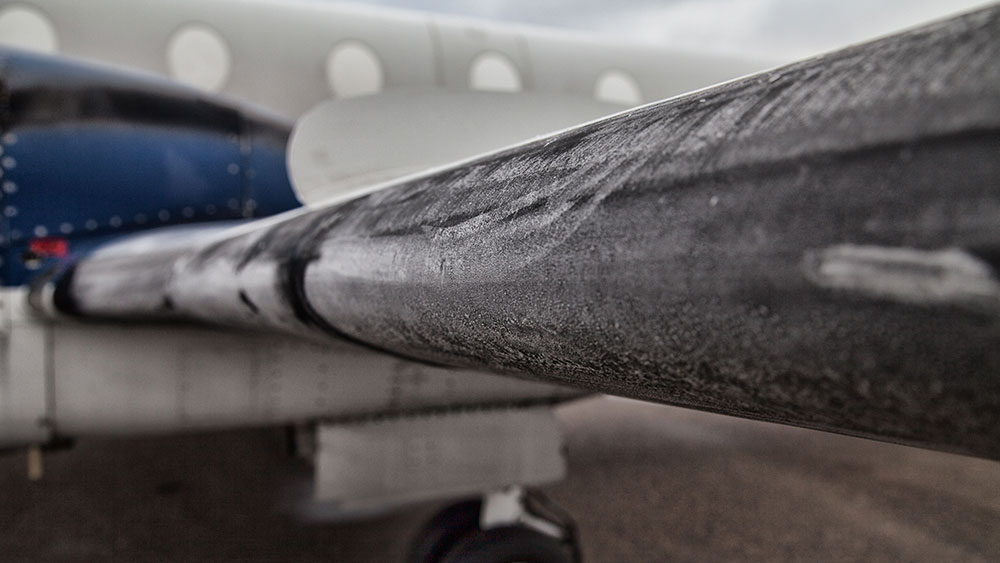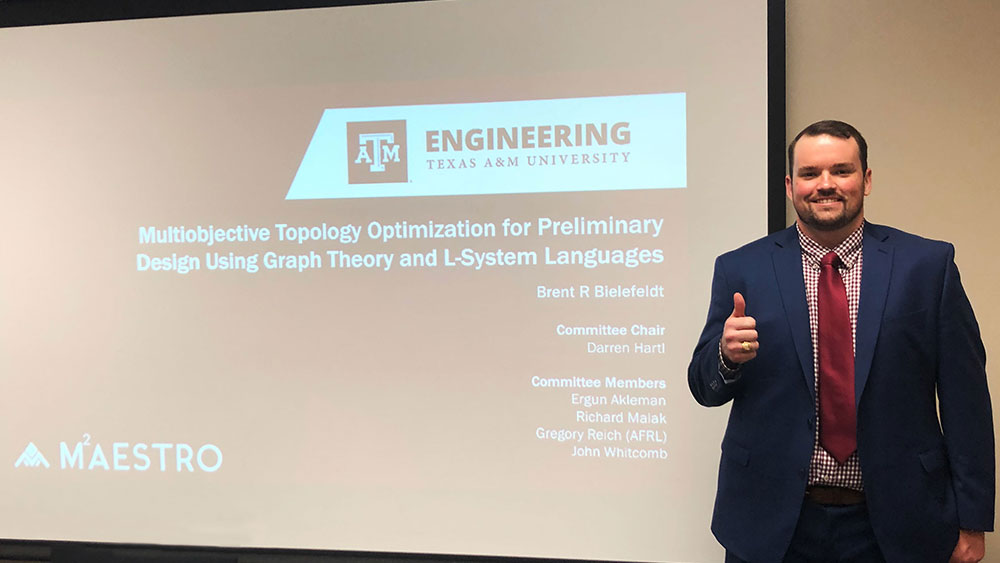
Dr. Brent Bielefeldt '16, ’20 discovered his interest for structural design in middle school when, during career day, his friend’s dad designed an entire airplane on the computer in less than 30 minutes. He was fascinated by the tools and their capabilities at this engineer’s fingertips. Eventually, Bielefeldt’s interest in engineering led him to pursue his master’s and doctoral degrees in aerospace engineering at Texas A&M University, where he began developing a tool of his own that would solve a current concern in the field of topology optimization.
Topology optimization is the process of taking a preliminary structural design, like an aircraft wing, and adjusting where material should be placed to maximize the efficiency of the structure and its performance. To achieve this, designers rely heavily on not only math and engineering, but also their intuition for both the materials they're working with and the problem they're trying to solve. However, designers that are unfamiliar with the responses of adaptive materials to different physical fields may be unable to effectively utilize their complex behaviors, creating a major drawback.
“If someone asks you to design an aircraft wing of a certain material, how are you going to do that if you don’t have experience with what that material is, what it’s going to do and how it’s going to react and respond? My research has focused on a tool that is flexible enough to explore the design space, generate solutions that are well-performing and identify trends to give designers a starting point,” he explained.
According to Bielefeldt, his framework will allow aircraft designers to tailor the material and structure to a given application and discover non-intuitive solutions. The added ability to consider multiple physical fields will also allow for more realistic models of complex materials and combined loading conditions, potentially expediting the design process.
The need for this solution and the promise of Bielefeldt’s research presented him a significant opportunity upon receiving his doctorate. Since graduating in May, Bielefeldt has been able to devote full-time effort to working on his project with leading scientists and engineers at the Air Force Research Laboratory in Ohio as part of a year-long research associateship. The opportunity was awarded to him by the National Academies of Science, Engineering and Medicine through their highly competitive National Research Council (NRC) Research Associateship Programs.

Applications for the NRC Research Associateship Programs go through an extensive review process by panels of distinguished scientists and engineers who evaluate the applicant’s academic and research record, and scientific merit of their proposed research. Applications are assessed for quality, likelihood for success and contribution of the research.
“It’s always good to be doing research that you enjoy and that other people think is worthwhile and worth pursuing and that you’re the person who should be pursuing it,” said Bielefeldt.
So far, the opportunity has given Bielefeldt the space to interact with world-class engineers and be exposed to different approaches to research projects, giving him a fresh perspective on engineering research.
“In addition to getting to work with incredibly talented researchers, I’ve enjoyed being able to collaborate on multiple projects and having the potential to shape the direction of research in the medium and long term,” said Bielefeldt.
Stepping outside of his area of expertise when collaborating on other projects, though, has been challenging for Bielefeldt, as well as making progress on his research in an environment affected by COVID-19. He attributes his success to some of the experiences from his time at Texas A&M.
“Texas A&M taught me to be self-reliant,” said Bielefeldt. “I was challenged to learn critical thinking skills and become a problem solver, which has helped me stay productive and continue to make progress on my research.”
Bielefeldt says the level of expectations at Texas A&M and from his former advisor Dr. Darren Hartl, assistant professor in the aerospace engineering department, has also stuck with him and he hopes is resulting in better and more impactful research.
“Brent represented exactly the kind of student I seek to recruit to Texas A&M,” said Hartl. “He is hardworking with a great personality, self-critical but optimistic, and above all, truly curious. He is certain to be a strong technical leader for our nation, and I hope to work with him more in the coming years.”